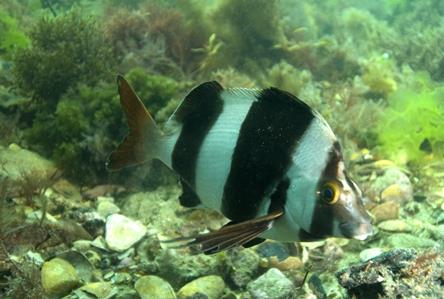General Description
Body robust, compressed, head profile concave with a pair of small horns in front of the eyes; lips thick, rubbery; lower pectoral-fin rays thickened and elongate. Body with three broad black bands, the first on the head, the second encircling the body behind the head and the third crossing the anal fin and soft dorsal fin. The middle band is dark in some individuals and light grey in others and the reddish tail of juveniles darkens with maturity. To 40 cm.
Biology
This species is often seen sheltering in small groups in caves.
Habitat
Sheltered and exposed coastal reefs, found in caves and under overhangs, in depths of 0-25 m.
Reefs
Distribution guide
Southern Australia.
Species Group
Depth
Water Column
Max Size
40 cm
Diet
Carnivore
Commercial Species
No
Global Dispersal
Native to Australia
Conservation Status
- DSE Advisory List : Not listed
- EPBC Act 1999 : Not listed
- IUCN Red List : Not listed








